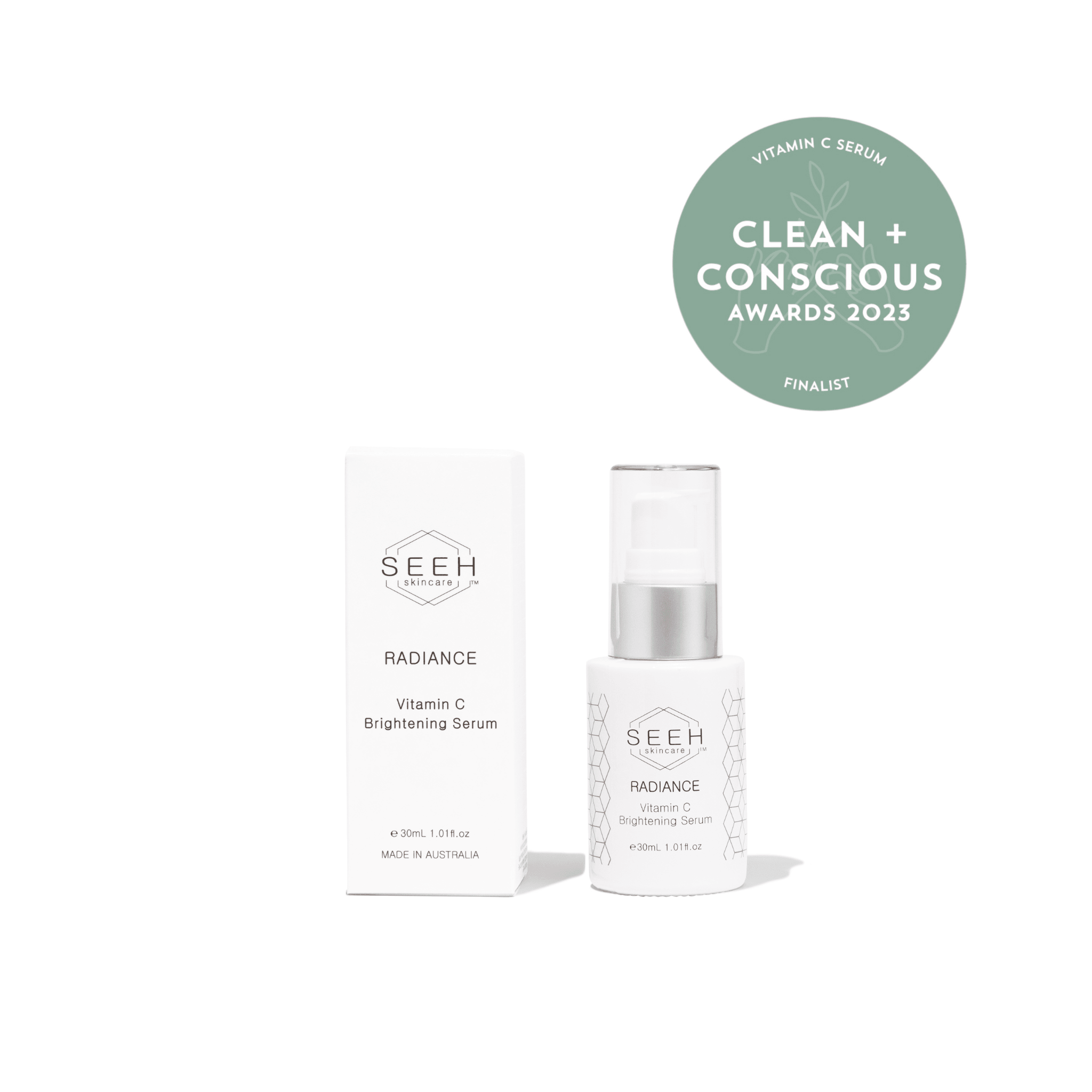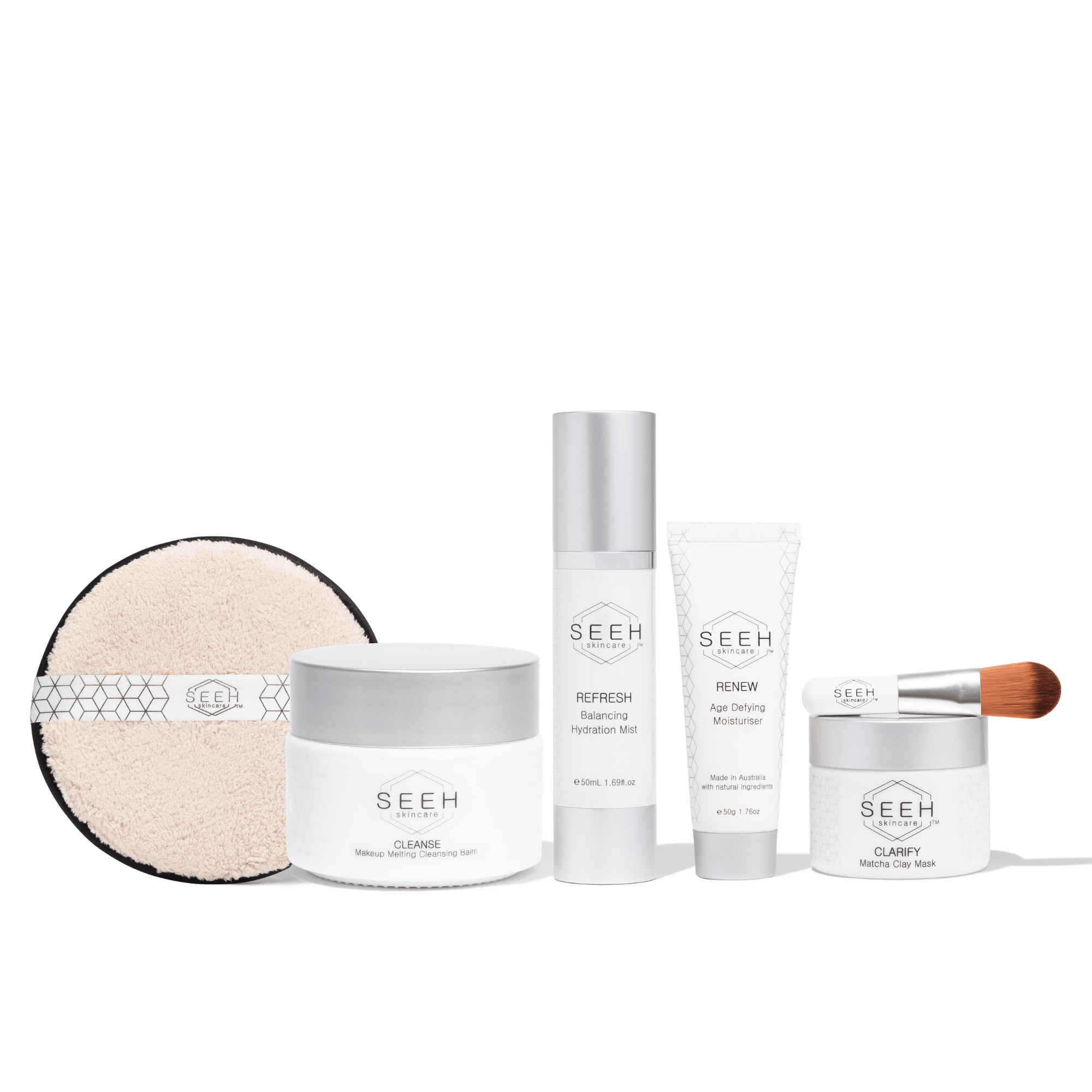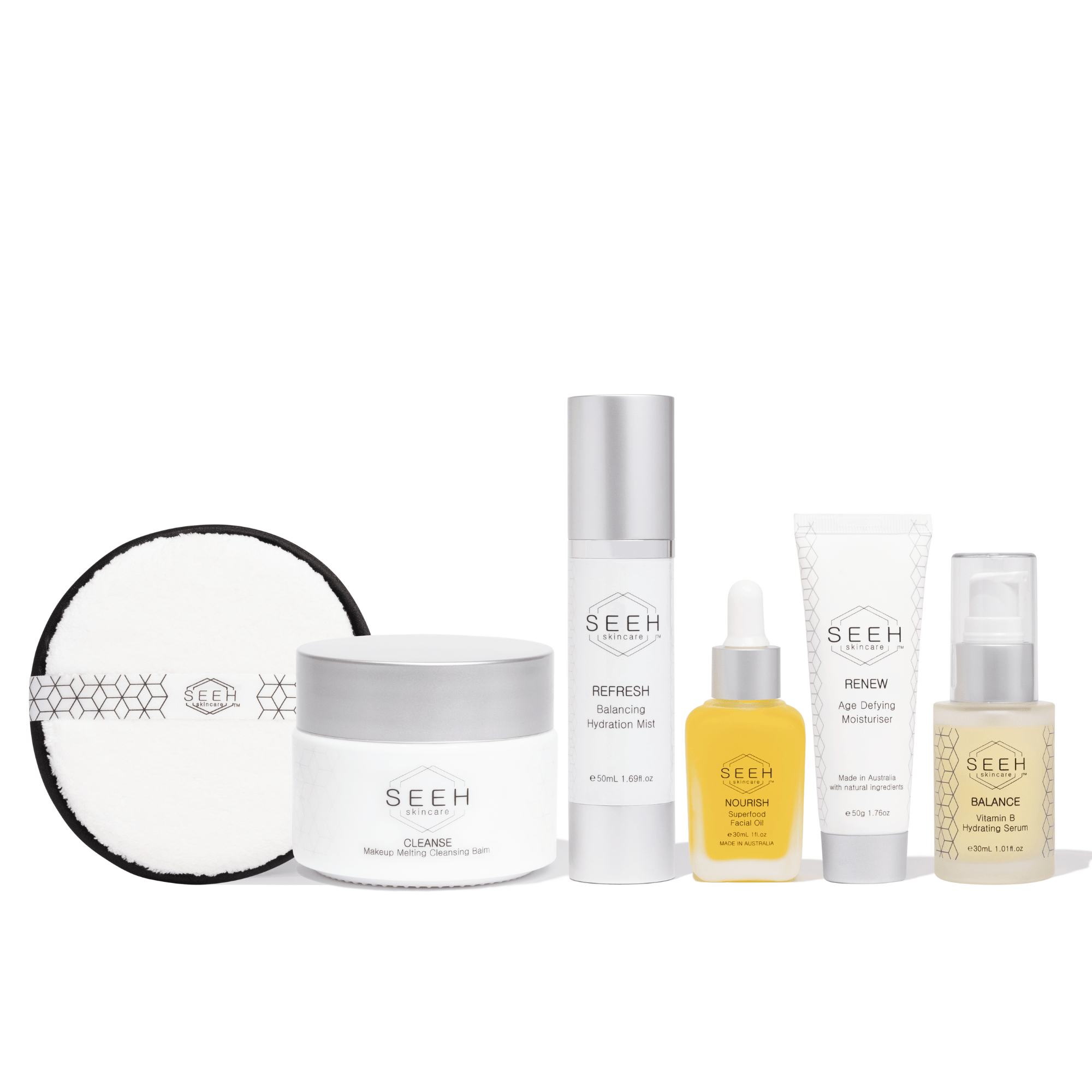Rosacea redness and pain can be really stressful to live with.
However, there are steps you can take to calm skin and reduce the severity of flare-ups.
What it is, why it happens, what hurts, and what helps? Stick around while we explain what you need to know about rosacea.
What is rosacea?
Rosacea is a chronic, inflammatory skin condition characterised by the following symptoms;- Hot flushing episodes
- Persistent redness (varying in intensity) usually across the cheeks and nose
- Visible blood vessels
- Bumpy, uneven skin tone sometimes confused with acne
- Stinging sensations
- Dry, dull-looking skin
If you’re dealing with rosacea, your skin barrier is damaged. A compromised barrier means moisture rapidly evaporates (resulting in dryness) and irritants can penetrate the skin. This irritation increases blood flow to the face leading to hot flushing, persistent redness, and visible capillaries.
What causes rosacea?
The exact cause of this chronic condition is still unknown but the positive news is, for many people, rosacea can be controlled.Making lifestyle adjustments can help reduce the intensity and frequency of flare-ups.
Rosacea flares can be triggered by:
- Sun and wind exposure
- Indoor heating
- Alcohol - particularly red wine
- Emotional stress
- Vigorous exercise
- Hot showers and baths
- Spicy foods and other dietary triggers
- Blood pressure medication
- Certain ingredients in skincare (more on these in a moment..)
Skincare tips for rosacea
Stick with a (VERY!) simple routine
Don’t overload your skin with products. The best rosacea skincare routines are a simple, 3-step process; gentle cleanser, moisturiser and broad spectrum mineral sunscreen.
Once your symptoms are under control, an antioxidant serum and / or nourishing face oil may be added.
Use gentle skincare free from fragrance and potential irritants
Rosacea skin is easily irritated so limiting contact with ingredients likely to trigger a flare-up is a must.
A quick rundown of ingredients to avoid: Fragrance, alcohol*, witch-hazel, eucalyptus, menthol, essential oils, sodium laureth sulphate and some AHAs such as glycolic acid.
Heads up; fragrance goes by a lot of names on the ingredient list. It may appear as linalool, limonene, citronellol, geraniol and eugenol. These are components of essential oils.
*Cetearyl alcohol and cetyl alcohol are some exceptions here. They are found in many gentle, rosacea-friendly skincare products as their emollient properties encourage moisturisation rather than dry the skin like other forms of alcohol.
Focus on ingredients that strengthen and heal the barrier
We’ve covered ingredients that harm rosacea skin, what about those that heal?Look for ingredients that strengthen the skin barrier and support moisture levels. Repairing the skin barrier reduces the chance of irritation, in turn minimising flushing episodes.
Avoiid cleansing with hot water
Always use lukewarm water and always handle your skin gently; no vigorous rubbing or rough towel drying.
Apply a mineral, broad-spectrum sunscreen daily
Sun is high on the trigger list for rosacea skin so applying broad-spectrum mineral sunscreen year-round is a must. It can be challenging to find a sunscreen that protects without irritation but mineral sunscreens are usually a safe choice.
Mineral (physical) sunscreens contain active ingredient/s zinc oxide or zinc and titanium dioxide. Both are generally well tolerated by rosacea skin.
Managing rosacea and redness with SEEH
CLEANSE Makeup Melting Cleansing Balm is a wonderful choice for sensitive skin types, including rosacea. This gentle cleanser contains barrier-strengthening plant oils and Vitamin E.
Calm red, angry skin with RENEW Age Defying Moisturiser. Ideal for your simple rosacea routine, the moisturiser is formulated with ceramides to repair and restore skin barrier functionality, improve moisturisation and reduce skin irritation.
When persistent flushing and redness are under control, you may like to incorporate a few more steps into your routine with NOURISH Superfood Facial Oil and REFRESH Balancing Hydration Mist.
If you have any questions at all about the suitability of SEEH products for rosacea skin, please reach out. We’re here to help!
Kim xx






































































